If you’re looking for a way to extend your growing season, or protect your plants from frost, you may want to consider using a garden cloche. A cloche is a simple, yet effective way to provide your plants with some extra protection. In this article, we will answer some common questions about garden cloches, and provide you with some helpful tips on how to use them effectively!
What is a Garden Cloche?
A garden cloche is a simple, transparent cover that is placed over plants to protect them from the elements. Cloches can be made from a variety of materials, including glass, plastic, or even fabric. They are typically used to protect plants from frost damage, but can also be used to extend the growing season by trapping heat and moisture around the plant.
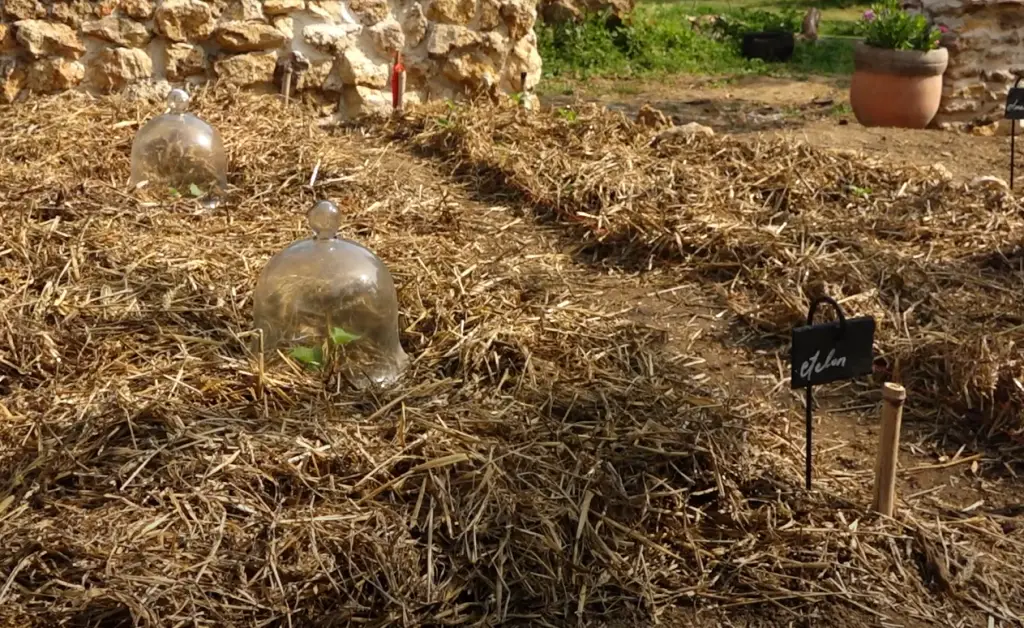
Cloches come in a variety of sizes and shapes, so it’s important to choose one that will fit your needs. For example, if you’re looking to protect a small group of plants from frost damage, you may want to consider using individual cloches. On the other hand, if you’re looking for a way to extend the growing season for an entire garden bed, you may want to use a larger cloche that covers the entire area.
No matter what size or type of cloche you choose, it’s important to make sure that it is properly ventilated. This will ensure that your plants don’t overheat, and also help to prevent disease.[2]
What Does a Cloche Look Like?
A cloche is a glass or plastic dome that is placed over plants to protect them from the elements. Gardeners use cloches to start their plants earlier in the spring and extend the growing season into the fall. Cloches can also be used to protect plants from frost, wind, and pests.
When choosing a cloche for your garden, it is important to consider what type of weather protection you need. For example, if you live in an area with harsh winters, you will need a sturdier cloche that can withstand heavy snow and high winds.[1]How Does a Cloche Work?
Increasing the temperature for plants
A cloche is a simple gardening tool that can have a big impact on your plants. Cloches are typically made of glass or plastic and are used to create a mini-greenhouse effect around your plants. By trapping heat and moisture, cloches can help improve the growing conditions for your plants and give them a head start on the growing season.
Cloches can be used in a number of ways to benefit your plants. One common use for cloches is to increase the temperature around young seedlings or transplants. This can be especially helpful in early spring when overnight temperatures can still be quite chilly. By protecting your plants with a cloche, you can extend the growing season by several weeks and get a jump start on your garden.[4]
Safeguarding against bad weather conditions
Garden cloches are excellent for safeguarding against bad weather conditions, such as strong winds, heavy rain, or cold snaps. By covering your plants with a cloche, you can create a microclimate that is more favorable for plant growth. Cloches can also help to protect your plants from pests and diseases.
If you live in an area where the weather is particularly severe, garden cloches can be invaluable. By using them to create a protected microclimate, you can ensure that your plants are able to thrive, despite the challenging conditions.[4]
Protection from diseases and pests
One of the most important functions of a cloche is to protect your plants from diseases and pests. By creating a barrier between your plants and the outside world, you can help prevent infestations and outbreaks.
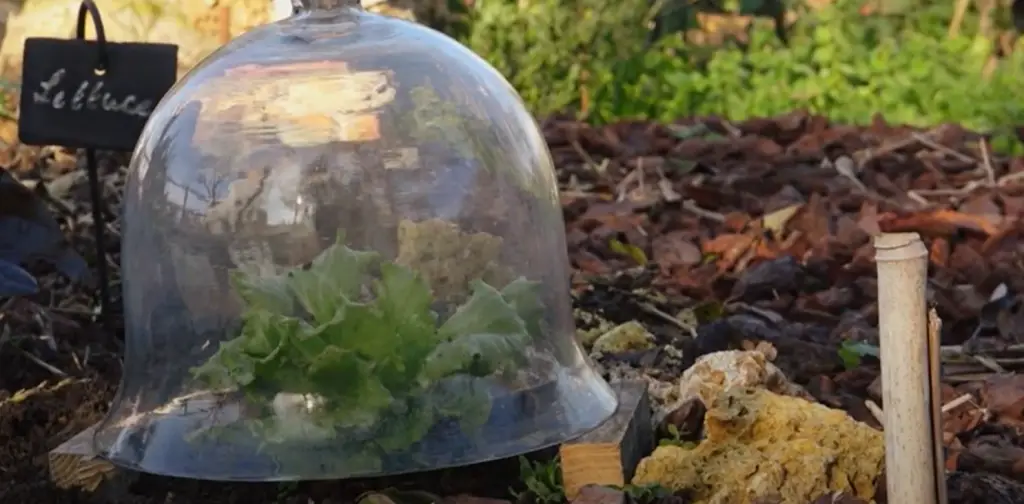
Cloches can also provide protection from extreme weather conditions, like frost or high winds. By creating a microclimate around your plant, you can help it survive in otherwise hostile conditions.
Will a Cloche Protect From Frost?
One common question we get asked is whether or not a cloche will protect plants from frost. The answer is yes, a cloche can help to protect plants from frost damage. By creating a mini greenhouse environment around the plant, the cloche traps heat and moisture in, helping to keep the temperature around the plant warmer than it would be without the cloche. This can help to prevent frost damage to delicate plants.
Of course, it’s important to remember that a cloche is not a magic bullet and will not completely protect your plants from all weather conditions. It’s still possible for strong winds or heavy rains to damage or topple over a cloche, so it’s important to take care when using them and make sure they are properly secured.
How Do You Use a Garden Cloche?
Garden cloches are a great way to protect your plants from the elements, but they can also be used to create a microclimate for your plants. Here are some tips on how to use garden cloches:
- Place the cloche over the plant you want to protect or grow.
- If you’re using multiple cloches, make sure there is enough space between each one so that air can circulate.
- Make sure the opening of the cloche is facing away from the wind.
- Check the inside of the cloche regularly and ventilate if necessary.
- Remove the cloche when the weather gets too hot or when you want to water your plants.[2]
How Do I Put Water In My Garden Cloche?
If you’re wondering how to water your plants while they’re in the cloche, there are a few options. You can either water them directly through the opening at the top of the cloche, or you can remove the lid and water them that way. If you have a lot of plants in one cloche, you may want to consider using a watering can with a long spout so that you can reach all of the plants without having to remove the lid.

Another option is to place a saucer or tray underneath the cloche and fill it with water. The plants will then be able to absorb moisture from the bottom up, which is especially helpful if they’re roots are getting dry. Just be sure to empty out the saucer or tray after a few hours so that the roots don’t stay too wet.[4]
What Can I Grow Under a Cloche?
Seed germination
One of the great things about cloches is that you can use them to get a jump start on the gardening season. By covering your seedlings with a cloche, you can create a warm, humid microclimate that is ideal for germination and early growth.
If you are starting your seeds indoors, simply place your filled flats or pots inside the cloche once the seeds have been sown. Make sure to ventilate the cloche on warm days to prevent excessive heat build-up, and water as needed to keep the soil moist but not soggy. Once your seedlings have germinated and are growing well, you can begin hardening them off by slowly acclimating them to conditions outside.[1]
Seedling protection
A cloche is a great way to protect your young seedlings from the elements, as well as pests. By creating a mini greenhouse effect, you can raise the temperature inside the cloche and create a more hospitable environment for your plants. You can also use row covers or plastic mulch in conjunction with your cloche for extra protection.
To use a cloche to protect your seedlings, simply place it over the area where you’ve planted them. Make sure that the cloche is tall enough that your seedlings won’t touch the top when they grow, and be sure to ventilate on hot days to prevent overheating.[1]
Pest and disease control
Garden cloches can also be used to protect your plants from pests and diseases. By creating a barrier around your plants, you can keep harmful insects and animals from reaching them. You can also use garden cloches to create a microclimate that is less favorable for disease-causing organisms to thrive in.
If you live in an area with a lot of deer or rabbits, garden cloches can be a great way to keep them from eating your plants. Simply place the cloche over the plant you want to protect and secure it in place so that the animals cannot get underneath it.
You can also use garden cloches to protect your plants from frost damage. By placing a cloche over a plant, you can create a microclimate that is a few degrees warmer than the surrounding air. This can help to prevent your plants from being damaged by frost or freezing temperatures.[1]
Where to Buy a Garden Cloche
If you’re looking for a garden cloche, your best bet is to head to your local garden center or nursery. You can also find them online, but be sure to do your research first to make sure you’re getting a good quality product.[1]
How to Make a Garden Cloche
Clear Plastic Bottle Cloche
If you’re looking for a quick, easy and inexpensive way to create a mini greenhouse for your plants, then look no further than a clear plastic bottle cloche. All you need is a clean, empty plastic bottle with the bottom cut off. Simply place the bottle over your plant, making sure that the neck of the bottle is buried in the soil so that it doesn’t blow away in windy weather.
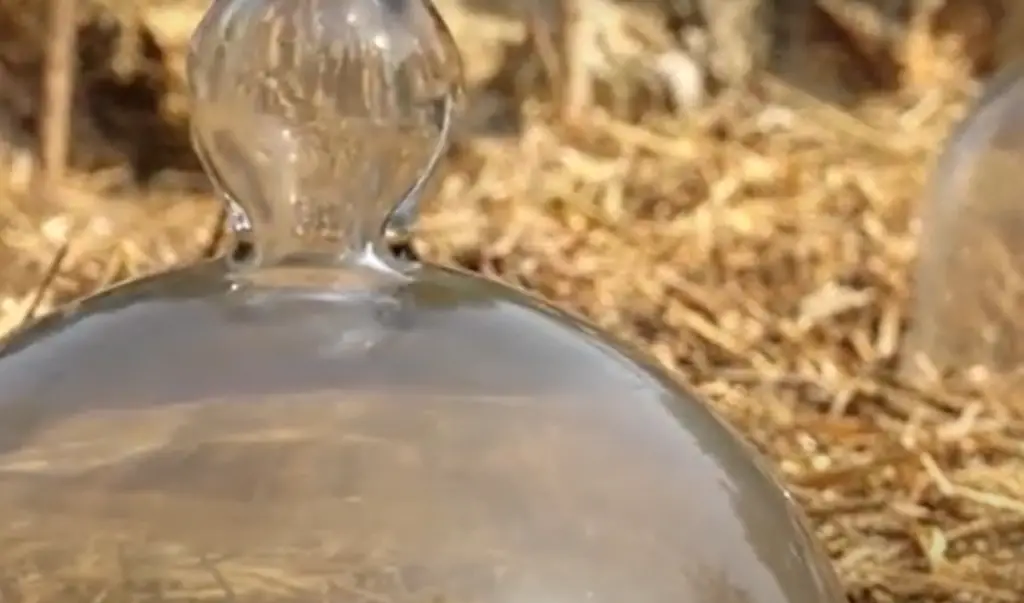
You can also use recycled soda bottles or water bottles as mini greenhouses. Just cut off the bottom of the bottle and place it over your plant.
Wire Mesh Covered Cloche
This is the most common type of cloche that you’ll find on the market. They’re easy to set up and take down, which makes them ideal for seasonal use. Most wire mesh cloches come with a base plate that helps to keep the structure stable in windy conditions.
To use a wire mesh cloche, simply place it over your plants and secure it to the ground with pegs or guy ropes. For extra ventilation, you can prop open the door or sides of the cloche with sticks or rocks.
Wire mesh cloches are great for protecting plants from a variety of pests, including rabbits, cats, birds, and insects. They can also be used to create a microclimate around tender plants, which can help to extend the growing season.
One downside of wire mesh cloches is that they don’t provide much protection from extreme weather conditions. If you’re expecting a harsh frost or high winds, it’s best to use a sturdier type of cloche.
Another thing to keep in mind is that wire mesh cloches can be difficult to ventilate on hot days. If your plants are prone to heat stress, you might want to consider using a different type of cloche.[1]
Metal Frame Cloche
If you want to create a more sophisticated look in your garden, then metal frame cloches are a great option. They come in a variety of shapes and sizes, so you can find one that fits the space you have available. You can also get them in different colors, so they will match the rest of your garden decor.
To use a metal frame cloche, simply place it over the area you want to protect. Make sure that the sides are tall enough to keep out any pests or animals that might try to get in. You can also buy covers for your metal frame cloches, which will help to keep the heat in during cold weather.
One thing to remember when using metal frame cloches is that they can be quite heavy. so you will need to make sure that they are securely anchored to the ground. Otherwise, they could blow away in strong winds.
If you’re not sure how to use a metal frame cloche, then there are plenty of tutorial videos available online. Just search for “metal frame cloche” and you’ll find plenty of results.
Metal frame cloches are a great way to add a touch of class to your garden. With a little bit of care, they will last for many years and protect your plants from the elements.
Tent Cloche
If you’re looking for a more heavy-duty option, consider using a tent cloche. These are great for protecting larger plants from harsh weather conditions. You can find these at most home improvement stores.
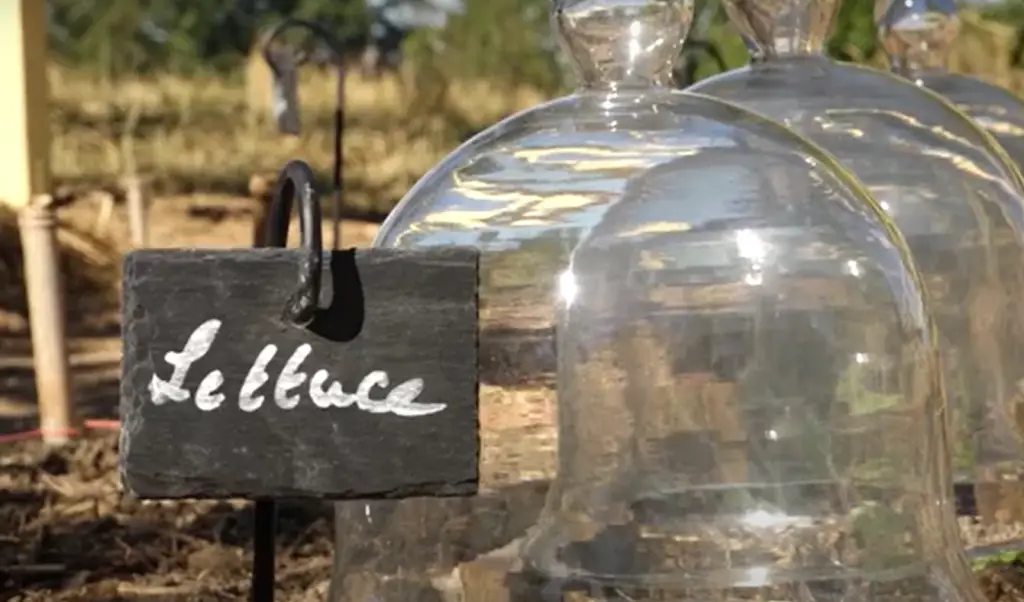
To use a tent cloche, simply place it over the plant you want to protect. Make sure the opening is facing away from the wind. You can secure the cloche to the ground with stakes or weights so it doesn’t blow away.[1]
Advantages
If you are unfamiliar with garden cloches, they are essentially mini-greenhouses that can be placed directly over your plants. Cloches protect your plants from the elements, including frost and pests. They create a microclimate around your plant, trapping heat and moisture to help your plant grow.
There are many advantages to using garden cloches. Here are just a few:
- Cloches help extend the growing season by protecting plants from early frosts and late freezes. This means you can get a jump start on the growing season or extend it into the fall and winter months.
- Cloches also protect plants from pests such as rabbits, deer, and birds.
- Cloches can help increase the humidity around your plants, which is especially beneficial for seedlings and cuttings.
- Cloches can also help prevent wind damage to delicate plants.[3]
Disadvantages
There are a few disadvantages to using garden cloches. One is that they can be expensive, depending on the type and size you choose. Another is that they can be difficult to set up and take down, especially if you have a large garden. Finally, they can create too much heat and humidity around your plant, which can lead to fungal diseases.Despite these drawbacks, garden cloches can be a great way to protect your plants and extend the growing season. If you decide to use them in your garden, be sure to do your research and purchase quality cloches that will last for years.[3]
Other Ways to Protect Plants
In addition to using cloches, there are other ways you can protect your plants from the cold weather. You can use row covers, which are pieces of fabric that fit over rows of plants.
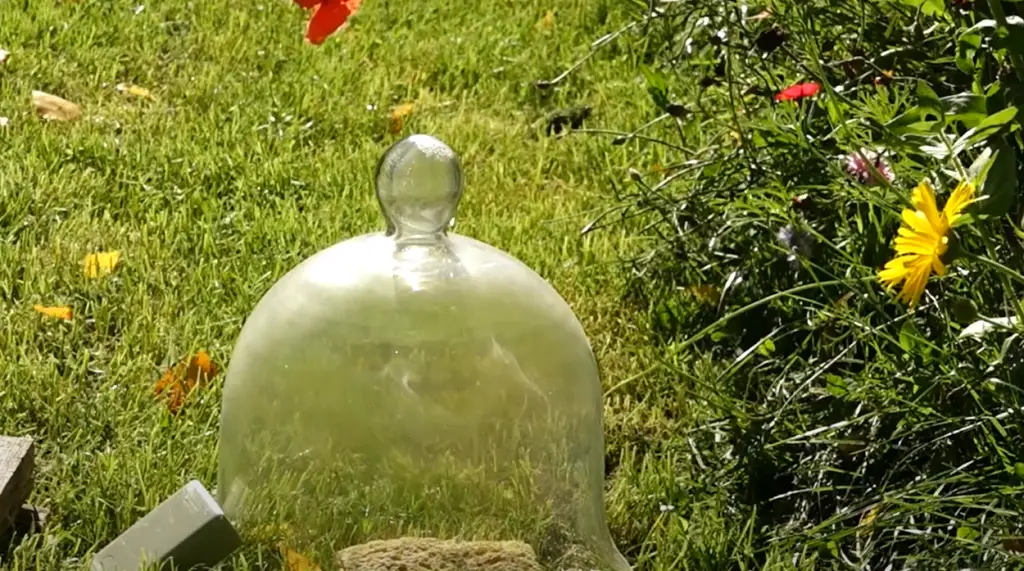
You can also use low tunnels, which are similar to row covers but are taller and have a frame around them.
Finally, you can build cold frames, which are boxes with clear tops that trap heat and protect plants from the cold.[1]FAQ
What plants do well in a glass cloche?
A glass cloche is a great way to protect your plants from the cold weather. Many different kinds of plants can do well in a glass cloche, but some of the most popular ones include: tomatoes, cucumbers, peppers, eggplants, and beans.
If you’re not sure what kind of plants you want to grow in your cloche, it’s a good idea to talk to a gardening expert at your local nursery. They can help you choose the right plants for your climate and your garden.
What’s the difference between a cloche and a bell jar?
The terms “cloche” and “bell jar” are often used interchangeably, but there is a subtle difference. A cloche is a bell-shaped glass or plastic cover that is placed over plants to protect them from the cold. A bell jar, on the other hand, is a sealed glass container that can be used to create an enclosed environment for plants (or other objects).
Can plants breathe under a cloche?
The short answer is no, plants cannot breathe under a cloche. They will however, continue to photosynthesize and produce oxygen as long as they have access to light.
If you are concerned about your plants not getting enough oxygen, you can poke holes in the cloche or remove it for a few hours each day. Just be sure to put it back in place before the temperature drops too much at night.
How many days can you leave plants covered?
The simple answer to this question is that it depends on the plant. Some plants will be okay after just a few days, while others may need a week or more. If you’re not sure how long your particular plant will need, it’s always best to err on the side of caution and check on it every day or two.
Another factor to consider is the weather. If it’s been particularly hot or cold outside, you may need to adjust the amount of time your plant spends covered accordingly. In general, though, most plants will do fine if they’re covered for three to five days at a time.
Finally, keep in mind that some plants simply don’t like being covered.
Useful Video: How to Use a Garden Cloche | Garden
Conclusion
If you’re interested in using a garden cloche to protect your plants from the elements, we hope this guide has been helpful. Remember to consult our FAQ section if you have any questions, and happy gardening!
References:
- https://greenupside.com/what-is-a-garden-cloche-3-ways-to-use-them/
- https://www.gardeningknowhow.com/garden-how-to/tools/using-cloches-in-gardens.htm
- https://www.rhs.org.uk/prevention-protection/cloches
- https://gardenmotivation.com/how-to-use-garden-cloche/





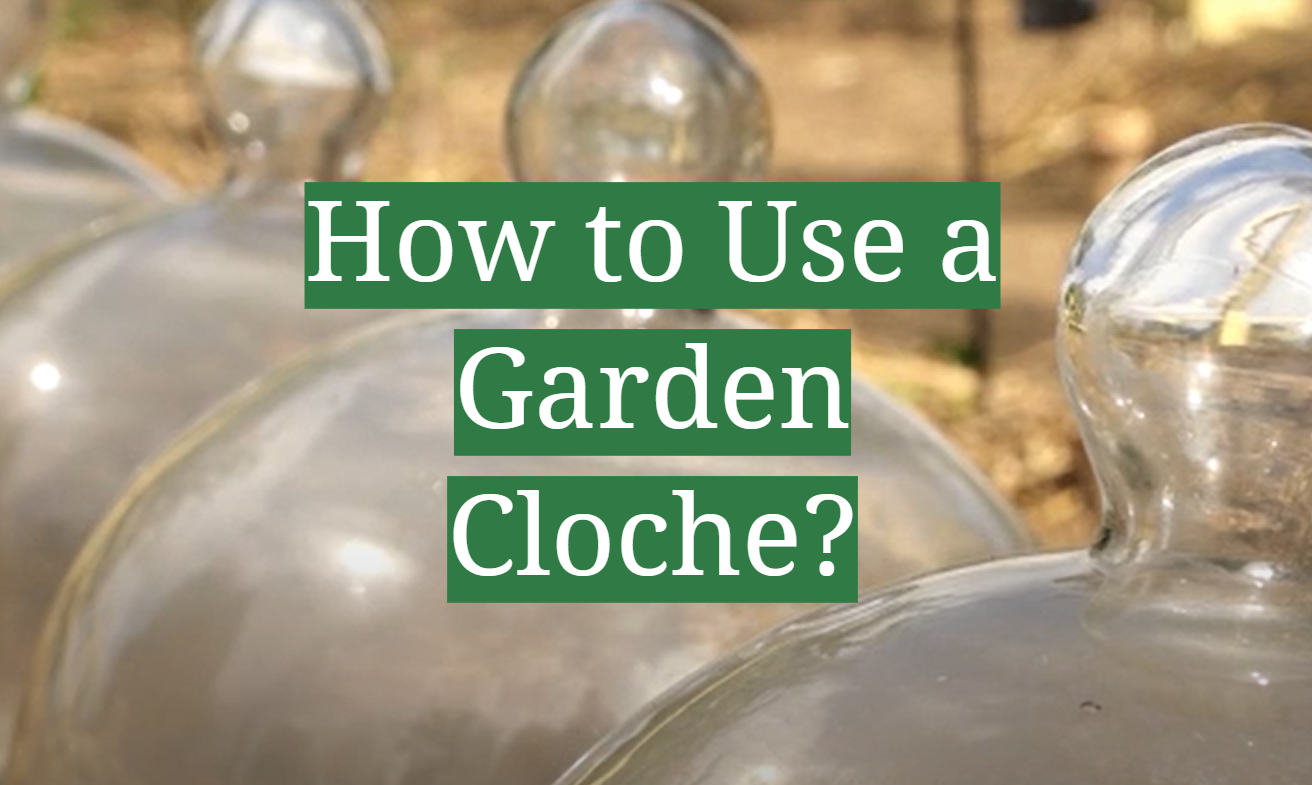




Leave a Reply
View Comments